What is calcium phosphate used for. Calcium Phosphate: Uses, Interactions, Mechanism of Action
What is calcium phosphate used for? Calcium phosphate is a compound that contains both calcium and phosphorus. It has many uses, including in supplements, antacids, toothpaste, and more. Find out the potential benefits and risks of calcium phosphate supplementation.
Understanding Calcium Phosphate
Calcium phosphate is a naturally occurring mineral that is a major component of bones and teeth. It is a compound containing both calcium and phosphorus, or phosphoric acid. Calcium phosphate is available as an option for calcium supplements, along with calcium carbonate and calcium citrate. There are also many different types of calcium phosphate, with the largest source in the body being hydroxyapatite (HAP), which is an important structural component of bones and teeth.
Both calcium and phosphorus are essential minerals that play crucial roles in various bodily functions, particularly in maintaining bone, muscle, blood, and nerve health. Calcium phosphate has a variety of uses both within and outside the body, including in over-the-counter supplements, antacids, toothpaste, bone graft substitutes, fragrances, anti-caking agents, and fertilizers.

Potential Benefits of Calcium Phosphate Supplementation
A person may benefit from calcium phosphate supplementation if they are experiencing a deficiency in these minerals. The recommended daily intake of calcium is around 1,000 milligrams (mg) and approximately 1,250 mg for phosphorus. Supplementation may be useful for individuals with certain health conditions, such as:
- Hypocalcemia: A deficiency of calcium in the blood
- Osteoporosis: A decrease in bone mineral density and bone mass, increasing the risk of bone fractures
- Hypoparathyroidism: A rare condition resulting from inadequate parathyroid hormone (PTH) production, which is responsible for maintaining normal calcium and phosphorus levels
- Vitamin D deficiency: Vitamin D helps the body absorb calcium, so a deficiency can lead to calcium deficiency as well
Calcium phosphate supplementation may also be beneficial for postmenopausal individuals and those with dietary restrictions, such as lactose intolerance or avoidance of dairy products, as they may be at a higher risk of calcium deficiency.
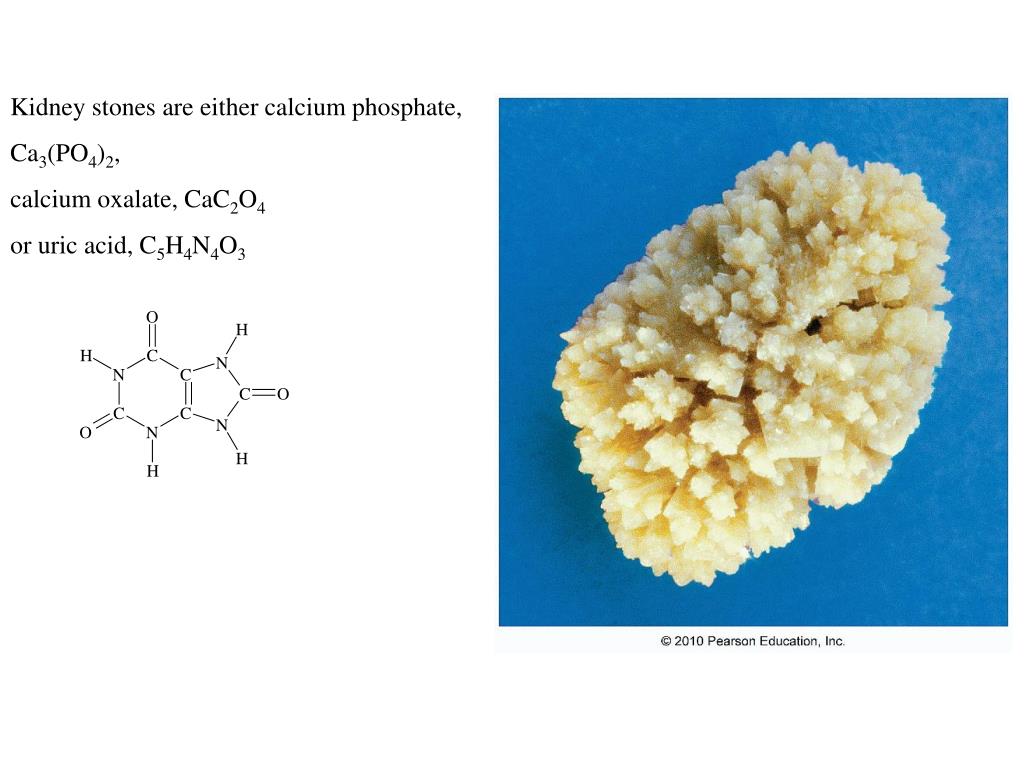
Potential Risks of Calcium Phosphate Supplementation
While calcium phosphate supplementation can provide health benefits, it can also carry some risks. Potential side effects may include:
- Diarrhea
- Nausea and vomiting
- Loss of appetite
- Weakness
- Headaches
- Bone and muscle pain
- Kidney problems
Excessive calcium intake can lead to a condition called hypercalcemia, which can result in a range of complications, such as gastrointestinal discomfort, bone issues, kidney problems, fatigue, and even changes to mental state.
Potential Cardiovascular and Cancer Risks
Some evidence also suggests that high calcium and phosphate intake may increase the risk of cardiovascular disease and prostate cancer, although more research is needed in this area.
Conclusion
Calcium phosphate is a compound that contains both calcium and phosphorus, and it has a variety of uses both within and outside the body. While it can provide health benefits, particularly for individuals experiencing mineral deficiencies, it can also carry some risks, including the potential for hypercalcemia and its associated complications. It is important for individuals considering calcium phosphate supplementation to discuss the potential benefits and risks with their healthcare provider.
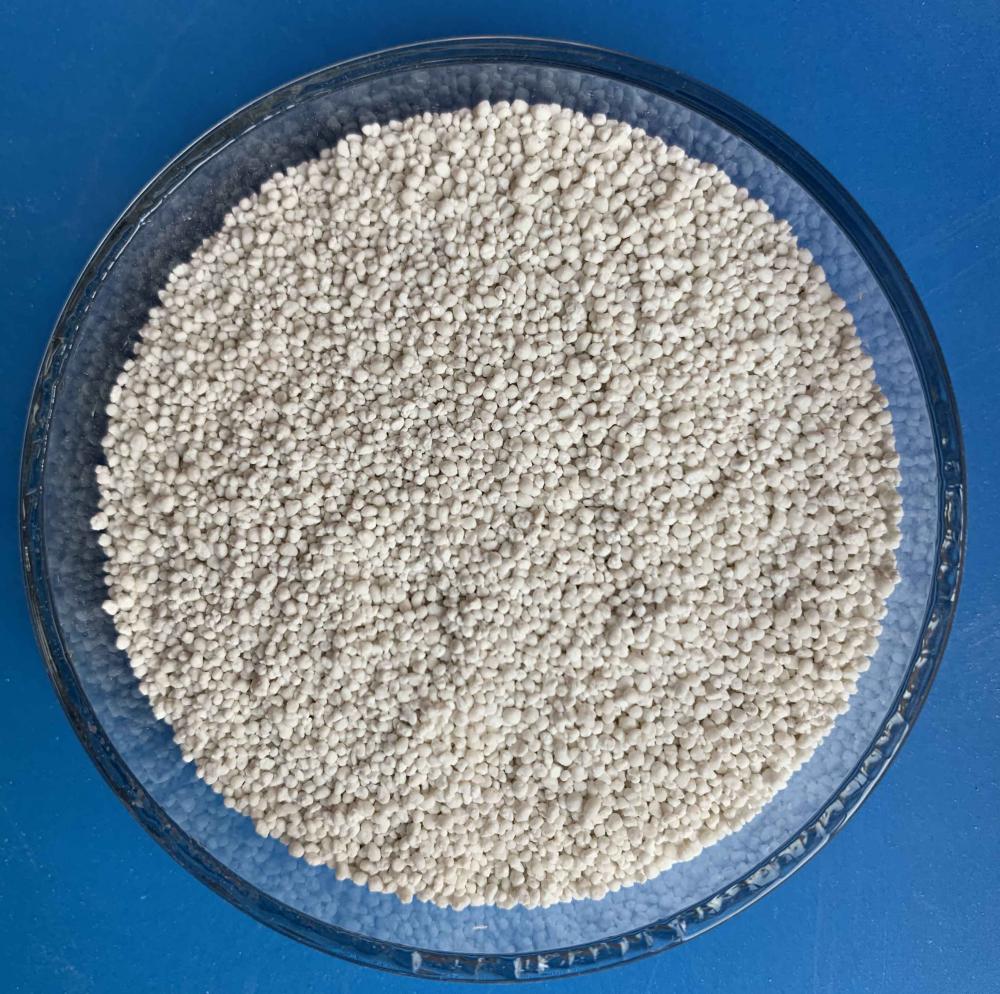
Key Takeaways
- Calcium phosphate is a naturally occurring mineral that is a major component of bones and teeth.
- It is available as an option for calcium supplements and has many other uses, such as in antacids, toothpaste, and fertilizers.
- Calcium phosphate supplementation may be beneficial for individuals with certain health conditions, such as hypocalcemia, osteoporosis, hypoparathyroidism, and vitamin D deficiency.
- Potential risks of calcium phosphate supplementation include diarrhea, nausea, loss of appetite, weakness, headaches, bone and muscle pain, and kidney problems.
- Excessive calcium and phosphate intake may also increase the risk of cardiovascular disease and prostate cancer, although more research is needed in this area.
FAQs
What is the recommended daily intake of calcium and phosphorus?
The recommended daily intake of calcium is around 1,000 milligrams (mg), and the recommended daily intake of phosphorus is approximately 1,250 mg.
Can calcium phosphate supplementation help with cholesterol levels?
Yes, some research suggests that calcium phosphate supplements may help decrease total cholesterol and low-density lipoprotein (LDL) cholesterol levels, which can contribute to conditions like cardiovascular disease, diabetes, and hypertension.

What are the potential side effects of excessive calcium phosphate intake?
Excessive calcium phosphate intake can lead to a condition called hypercalcemia, which can result in a range of complications, such as gastrointestinal discomfort, bone issues, kidney problems, fatigue, and changes to mental state.
Who should consider calcium phosphate supplementation?
Individuals who may benefit from calcium phosphate supplementation include those with certain health conditions, such as hypocalcemia, osteoporosis, hypoparathyroidism, and vitamin D deficiency, as well as postmenopausal individuals and those with dietary restrictions that may increase their risk of calcium deficiency.
What is it and what are the risks?
Calcium phosphate is a compound that contains both calcium and phosphorus. It is a naturally occurring mineral that is a large component of bones and teeth. The compound has a variety of roles in the body, and some people may benefit from supplementation. However, too much calcium phosphate can also cause some health risks.
Both calcium and phosphorus are minerals that the body requires to perform a range of essential functions. Namely, they both play important roles in keeping bones strong and healthy. Many people get sufficient calcium and phosphorus from their diet. In some cases of deficiency, people may consider supplements. However, they should discuss this with their doctor, as while they can provide health benefits, they may also cause some side effects.
This article discusses the potential benefits and risks of calcium phosphate and whether a person should consider taking them.
Calcium phosphate, also known as tricalcium phosphate, is a type of mineral. It is a compound containing calcium and phosphorus, or phosphoric acid.
It is a compound containing calcium and phosphorus, or phosphoric acid.
It is available as an option for calcium supplements, along with calcium carbonate and calcium citrate. There are also many different types of calcium phosphate. The largest calcium phosphate source in the body exists as hydroxyapatite (HAP), which is an important structural component of bones and teeth.
Calcium is also present in the circulatory system and tissues, while phosphorus is also an important component of DNA and protein. These minerals have essential roles in bone, muscle, blood, and nerve health.
Calcium phosphate also has many uses outside the body, as it is a component in many products, including:
- over-the-counter supplements
- antacids
- toothpaste
- bone graft substitutes
- fragrances
- anti-caking agents
- fertilizers
A person may benefit from calcium phosphate supplementation, particularly if they are experiencing a deficiency in these minerals. The recommended daily intake of calcium is about 1,000 milligrams (mg) and roughly 1,250 mg for phosphorus.
The recommended daily intake of calcium is about 1,000 milligrams (mg) and roughly 1,250 mg for phosphorus.
As such, supplementation may be useful for people who have certain health conditions, including:
- Hypocalcemia: A deficiency of calcium in the blood.
- Osteoporosis: This condition develops due to a decrease in bone mineral density and bone mass. It can increase the risk of a bone fracture.
- Hypoparathyroidism: This rare condition results from the body not producing or releasing adequate parathyroid hormone (PTH). PTH is responsible for maintaining normal levels of calcium and phosphorus in the blood.
- Vitamin D deficiency: Vitamin D helps absorb calcium in the gut. If a person is vitamin D deficient, they may also be calcium deficient.
Supplementation may also be useful for certain people that require additional calcium. This may includepostmenopausal people and those with dietary restrictions.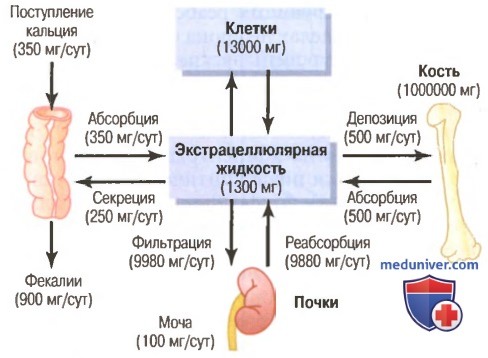 Individuals experiencing menopause may have weaker bones due to a decrease in the production of the hormone estrogen. Additionally, people who are lactose intolerant or avoid dairy products may be at a higher risk of being calcium deficient.
Individuals experiencing menopause may have weaker bones due to a decrease in the production of the hormone estrogen. Additionally, people who are lactose intolerant or avoid dairy products may be at a higher risk of being calcium deficient.
Calcium phosphate supplementation may also help with other conditions. A 2018 literature review notes that supplements could decrease total cholesterol and low-density lipoprotein (LDL) cholesterol concentration. High levels of these cholesterols may contribute to health conditions, such ascardiovascular disease, diabetes, and hypertension. The review also adds that the supplements may help with gut health.
Calcium phosphate supplementation may also carry some risk. Potential side effects can include:
- diarrhea
- nausea and vomiting
- loss of appetite
- weakness
- headaches
- bone and muscle pain
- kidney problems
Disturbances in calcium and phosphate balance can affect many parts of the body. As many people may use calcium phosphate to supplement their calcium intake, they may take too much and develop hypercalcemia. This excessive amount of calcium can result in several complications, which people may refer to as:
As many people may use calcium phosphate to supplement their calcium intake, they may take too much and develop hypercalcemia. This excessive amount of calcium can result in several complications, which people may refer to as:
- Groans: Hypercalcemia may result in discomfort and cause people to experience painful gastrointestinal symptoms.
- Bones: People may experience bone pain and are at risk of bone issues.
- Stones: Excessive calcium may cause kidney problems, such as kidney stones.
- Moans: This refers to the general feeling of fatigue and malaise people may experience.
- Thrones: This refers to the amount of time people may need to use the restroom due to increased urination and changes to bowel habits.
- Psychic overtones: This describes possible changes to mental state, such as lethargy, confusion, depression, and memory loss.
While more research is necessary, some evidence also notes that high calcium and phosphate intake may increase the risk of cardiovascular disease and prostate cancer.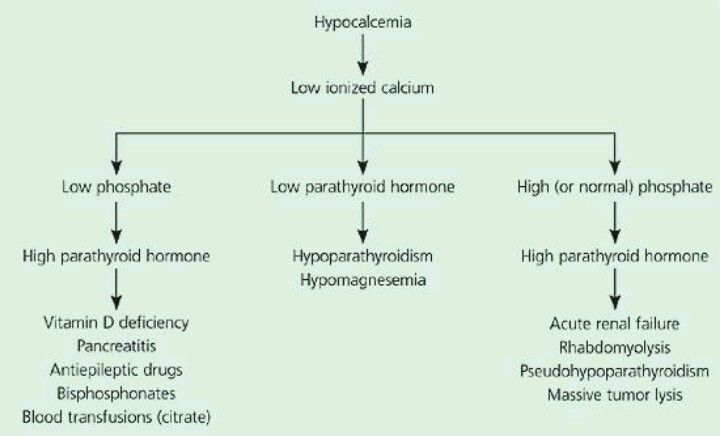
Additionally, calcium supplements may interact with certain medications. This can diminish the effect of the medication and lead to unwanted side effects. These medications may include:
- dolutegravir
- levothyroxine
- lithium
- quinolone antibiotics
As with any supplement, it is highly advisable for a person to discuss it with their doctor. A medical professional will be able to suggest the suitability of calcium supplements and may also provide alternative options. This is particularly important if a person is taking certain medications or at a higher risk of complications, such as kidney stones.
A person should take the calcium phosphate supplement as the packaging or their pharmacist directs. Different types of calcium supplements are available, so people should ensure they take the correct type.
A person typically takes calcium phosphate by mouth and it is available in liquid, chewable tablet, and capsule forms. A person should not exceed the daily dose recommended by the manufacturer and should carefully measure the correct dose.:max_bytes(150000):strip_icc()/phosphorus-health-benefits-4589810_V2-012-250bf62e8c5943ec873b810d50232db0.png) Calcium supplements absorb better when taken in smaller quantities of 500 mg or less. Therefore, people may divide their dose and space it throughout the day
Calcium supplements absorb better when taken in smaller quantities of 500 mg or less. Therefore, people may divide their dose and space it throughout the day
Calcium supplements also absorb better with food. Therefore, a person may consider taking the supplement with a meal. Additionally, vitamin D can help calcium absorb better in the gut. As such, people may want to include dietary sources or a calcium phosphate supplement that already contains vitamin D.
If a person is also taking an iron supplement, it is advisable to take the calcium supplement 2 hours before or 2 hours after to maximize absorption.
People can obtain sufficient amounts of calcium from dietary sources. Foods rich in calcium include:
- dairy products, such as milk, yogurt, and cheese
- fish, such as sardines and salmon
- green leafy vegetables, such as kale, broccoli, and watercress
- calcium-fortified foods, such as cereals, juices, and milk alternatives
- tofu
- nuts and seeds, such as almonds, sesame, and chia
Click here to learn more about calcium-rich vegan foods.
Calcium phosphate is a compound containing calcium and phosphorus. It is naturally present in the body, and some people may take it as a supplement to increase their calcium intake. Both calcium and phosphorus have a wide variety of functions in the body, including aiding in blood clotting, muscle function, bone regeneration, and cell signaling.
Supplements may benefit a person who has a health condition that requires extra calcium, including hypocalcemia, osteoporosis, and vitamin D deficiency. However, it is also possible for a person to experience side effects and complications from having too much calcium. This can include gastrointestinal distress, bone pain, and kidney problems.
As with any supplement, it is advisable for a person to consult their doctor. They can discuss whether supplements are suitable and suggest dietary sources of calcium, such as dairy products, green leafy vegetables, and fortified foods.
What is it and what are the risks?
Calcium phosphate is a compound that contains both calcium and phosphorus.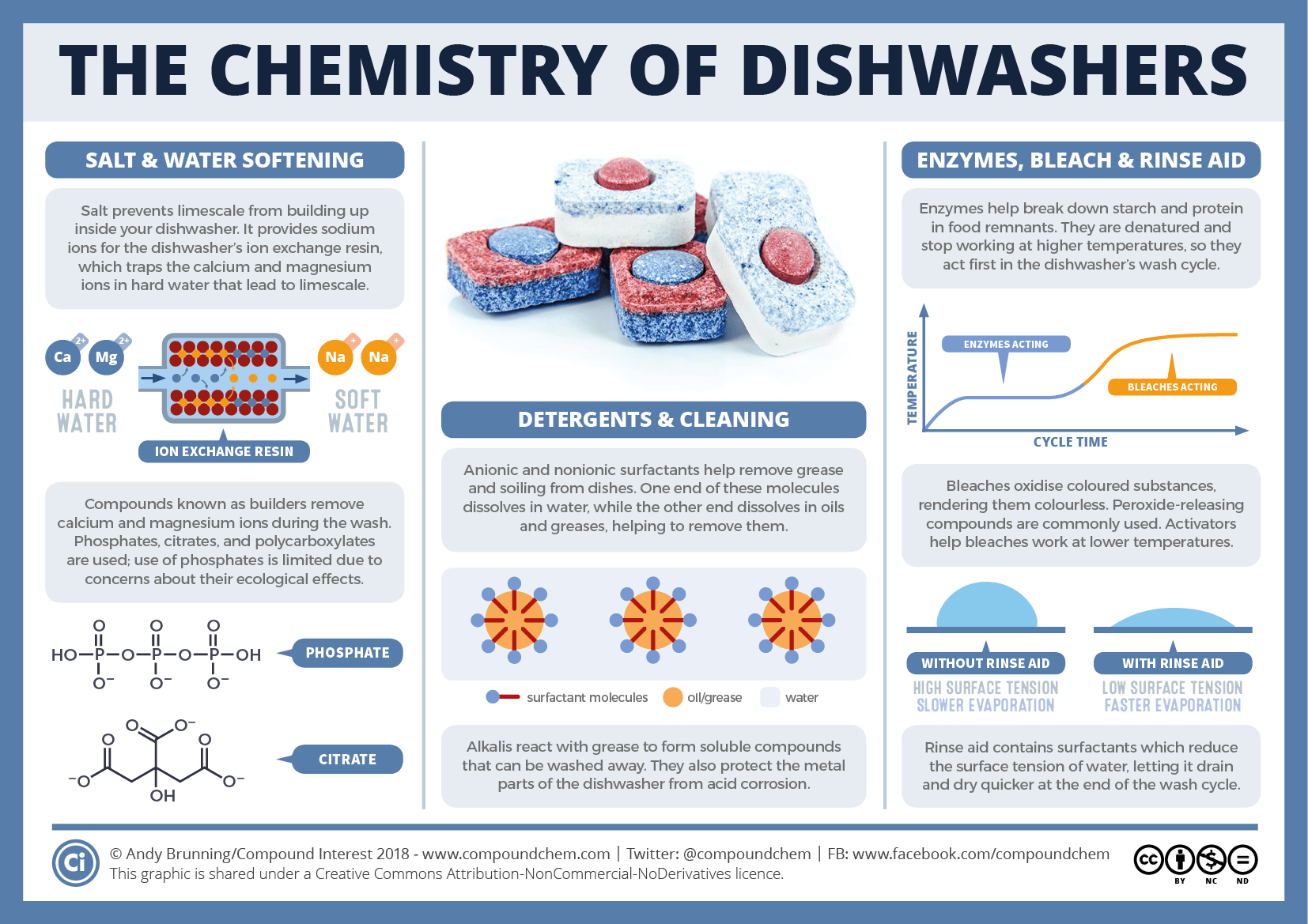 It is a naturally occurring mineral that is a large component of bones and teeth. The compound has a variety of roles in the body, and some people may benefit from supplementation. However, too much calcium phosphate can also cause some health risks.
It is a naturally occurring mineral that is a large component of bones and teeth. The compound has a variety of roles in the body, and some people may benefit from supplementation. However, too much calcium phosphate can also cause some health risks.
Both calcium and phosphorus are minerals that the body requires to perform a range of essential functions. Namely, they both play important roles in keeping bones strong and healthy. Many people get sufficient calcium and phosphorus from their diet. In some cases of deficiency, people may consider supplements. However, they should discuss this with their doctor, as while they can provide health benefits, they may also cause some side effects.
This article discusses the potential benefits and risks of calcium phosphate and whether a person should consider taking them.
Calcium phosphate, also known as tricalcium phosphate, is a type of mineral. It is a compound containing calcium and phosphorus, or phosphoric acid.
It is available as an option for calcium supplements, along with calcium carbonate and calcium citrate.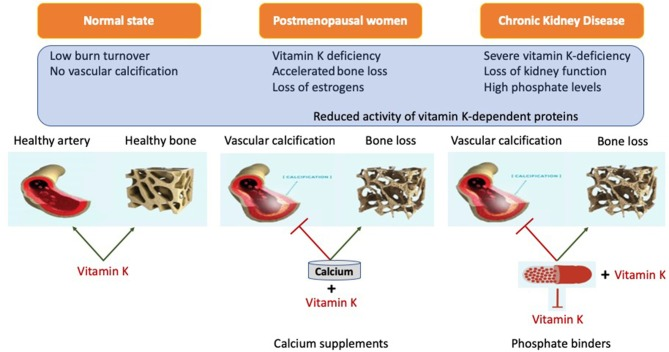 There are also many different types of calcium phosphate. The largest calcium phosphate source in the body exists as hydroxyapatite (HAP), which is an important structural component of bones and teeth.
There are also many different types of calcium phosphate. The largest calcium phosphate source in the body exists as hydroxyapatite (HAP), which is an important structural component of bones and teeth.
Calcium is also present in the circulatory system and tissues, while phosphorus is also an important component of DNA and protein. These minerals have essential roles in bone, muscle, blood, and nerve health.
Calcium phosphate also has many uses outside the body, as it is a component in many products, including:
- over-the-counter supplements
- antacids
- toothpaste
- bone graft substitutes
- fragrances
- anti-caking agents
- fertilizers
A person may benefit from calcium phosphate supplementation, particularly if they are experiencing a deficiency in these minerals. The recommended daily intake of calcium is about 1,000 milligrams (mg) and roughly 1,250 mg for phosphorus.
As such, supplementation may be useful for people who have certain health conditions, including:
- Hypocalcemia: A deficiency of calcium in the blood.

- Osteoporosis: This condition develops due to a decrease in bone mineral density and bone mass. It can increase the risk of a bone fracture.
- Hypoparathyroidism: This rare condition results from the body not producing or releasing adequate parathyroid hormone (PTH). PTH is responsible for maintaining normal levels of calcium and phosphorus in the blood.
- Vitamin D deficiency: Vitamin D helps absorb calcium in the gut. If a person is vitamin D deficient, they may also be calcium deficient.
Supplementation may also be useful for certain people that require additional calcium. This may includepostmenopausal people and those with dietary restrictions. Individuals experiencing menopause may have weaker bones due to a decrease in the production of the hormone estrogen. Additionally, people who are lactose intolerant or avoid dairy products may be at a higher risk of being calcium deficient.
Calcium phosphate supplementation may also help with other conditions. A 2018 literature review notes that supplements could decrease total cholesterol and low-density lipoprotein (LDL) cholesterol concentration. High levels of these cholesterols may contribute to health conditions, such ascardiovascular disease, diabetes, and hypertension. The review also adds that the supplements may help with gut health.
A 2018 literature review notes that supplements could decrease total cholesterol and low-density lipoprotein (LDL) cholesterol concentration. High levels of these cholesterols may contribute to health conditions, such ascardiovascular disease, diabetes, and hypertension. The review also adds that the supplements may help with gut health.
Calcium phosphate supplementation may also carry some risk. Potential side effects can include:
- diarrhea
- nausea and vomiting
- loss of appetite
- weakness
- headaches
- bone and muscle pain
- kidney problems
Disturbances in calcium and phosphate balance can affect many parts of the body. As many people may use calcium phosphate to supplement their calcium intake, they may take too much and develop hypercalcemia. This excessive amount of calcium can result in several complications, which people may refer to as:
- Groans: Hypercalcemia may result in discomfort and cause people to experience painful gastrointestinal symptoms.

- Bones: People may experience bone pain and are at risk of bone issues.
- Stones: Excessive calcium may cause kidney problems, such as kidney stones.
- Moans: This refers to the general feeling of fatigue and malaise people may experience.
- Thrones: This refers to the amount of time people may need to use the restroom due to increased urination and changes to bowel habits.
- Psychic overtones: This describes possible changes to mental state, such as lethargy, confusion, depression, and memory loss.
While more research is necessary, some evidence also notes that high calcium and phosphate intake may increase the risk of cardiovascular disease and prostate cancer.
Additionally, calcium supplements may interact with certain medications. This can diminish the effect of the medication and lead to unwanted side effects. These medications may include:
- dolutegravir
- levothyroxine
- lithium
- quinolone antibiotics
As with any supplement, it is highly advisable for a person to discuss it with their doctor. A medical professional will be able to suggest the suitability of calcium supplements and may also provide alternative options. This is particularly important if a person is taking certain medications or at a higher risk of complications, such as kidney stones.
A medical professional will be able to suggest the suitability of calcium supplements and may also provide alternative options. This is particularly important if a person is taking certain medications or at a higher risk of complications, such as kidney stones.
A person should take the calcium phosphate supplement as the packaging or their pharmacist directs. Different types of calcium supplements are available, so people should ensure they take the correct type.
A person typically takes calcium phosphate by mouth and it is available in liquid, chewable tablet, and capsule forms. A person should not exceed the daily dose recommended by the manufacturer and should carefully measure the correct dose. Calcium supplements absorb better when taken in smaller quantities of 500 mg or less. Therefore, people may divide their dose and space it throughout the day
Calcium supplements also absorb better with food. Therefore, a person may consider taking the supplement with a meal. Additionally, vitamin D can help calcium absorb better in the gut. As such, people may want to include dietary sources or a calcium phosphate supplement that already contains vitamin D.
Additionally, vitamin D can help calcium absorb better in the gut. As such, people may want to include dietary sources or a calcium phosphate supplement that already contains vitamin D.
If a person is also taking an iron supplement, it is advisable to take the calcium supplement 2 hours before or 2 hours after to maximize absorption.
People can obtain sufficient amounts of calcium from dietary sources. Foods rich in calcium include:
- dairy products, such as milk, yogurt, and cheese
- fish, such as sardines and salmon
- green leafy vegetables, such as kale, broccoli, and watercress
- calcium-fortified foods, such as cereals, juices, and milk alternatives
- tofu
- nuts and seeds, such as almonds, sesame, and chia
Click here to learn more about calcium-rich vegan foods.
Calcium phosphate is a compound containing calcium and phosphorus. It is naturally present in the body, and some people may take it as a supplement to increase their calcium intake. Both calcium and phosphorus have a wide variety of functions in the body, including aiding in blood clotting, muscle function, bone regeneration, and cell signaling.
Both calcium and phosphorus have a wide variety of functions in the body, including aiding in blood clotting, muscle function, bone regeneration, and cell signaling.
Supplements may benefit a person who has a health condition that requires extra calcium, including hypocalcemia, osteoporosis, and vitamin D deficiency. However, it is also possible for a person to experience side effects and complications from having too much calcium. This can include gastrointestinal distress, bone pain, and kidney problems.
As with any supplement, it is advisable for a person to consult their doctor. They can discuss whether supplements are suitable and suggest dietary sources of calcium, such as dairy products, green leafy vegetables, and fortified foods.
Calcium phosphates – more than just a filler
Calcium salts have been used in pharmaceutical technology for many years. They have certain physical and chemical properties, which makes them ideal excipients in the production of solid dosage forms. Predominantly, calcium salts are used as fillers in the development of drug formulations, however, the functionality of calcium phosphates goes far beyond its use as a simple filler. Proper use of this auxiliary ingredient allows you to achieve the goals set for the developers.
Predominantly, calcium salts are used as fillers in the development of drug formulations, however, the functionality of calcium phosphates goes far beyond its use as a simple filler. Proper use of this auxiliary ingredient allows you to achieve the goals set for the developers.
Calcium salts are inorganic substances of mineral origin, and therefore they are characterized by high chemical stability. For the same reason, they are compatible with most known active pharmaceutical ingredients, with the exception of some antibiotics – indomethacin and tetracycline, which form difficult-to-absorb complexes with calcium ions. Tribasic calcium phosphate (USP) is incompatible with tocopheryl acetate, which binds a large number of hydroxyl groups on the surface of the substance.
Calcium salts of phosphoric acid do not interact with water, so they can be successfully used in any technology using water as a completely inert sealant. Because of their high calcium and phosphorus content, salts are often used as food supplements. In particular, hydroxyapatites are widely used in this industry due to the ratio of calcium and phosphorus, which is also characteristic of human bones.
In particular, hydroxyapatites are widely used in this industry due to the ratio of calcium and phosphorus, which is also characteristic of human bones.
Calcium phosphate auxiliaries – ideal direct compression fillers thanks to their inherent versatility. Suitable particle size and shape provide calcium phosphates with excellent fluidity. In addition, they can be used to control the flowability of poorly flowing powders, which makes it possible to obtain a tabletting mass relatively easily without resorting to an additional granulation step. The high density of calcium salts allows the use of a larger amount of excipients without increasing the size of the dosage form, and, if necessary, reducing the size of the final product without changing the amount of excipients in the composition.
Dibasic calcium phosphates are hard inorganic compounds which undergo predominantly brittle fracture during compression. This property provides high fluidity of the material, thus, the tablets are quite hard. In addition to this, tablets containing calcium phosphates in their composition are not subject to expansion after being pushed out of the die of the press tool. This phenomenon is usually observed after decompression of elastic or plastic-elastic materials. Another important feature of calcium phosphates is their low sensitivity to lubricants. An increase in the amount of lubricants or a long mixing time does not have a significant effect on the compressibility of powder mixtures containing calcium phosphates in their composition.
In addition to this, tablets containing calcium phosphates in their composition are not subject to expansion after being pushed out of the die of the press tool. This phenomenon is usually observed after decompression of elastic or plastic-elastic materials. Another important feature of calcium phosphates is their low sensitivity to lubricants. An increase in the amount of lubricants or a long mixing time does not have a significant effect on the compressibility of powder mixtures containing calcium phosphates in their composition.
A wide variety of different grades of calcium phosphates are available on the pharmaceutical market today. Grades containing large particles are mainly used for direct compression, while grades consisting of small particles are suitable for granulation processes. This article presents the most important properties of different calcium phosphate grades for direct compression:
- Dibasic calcium phosphate anhydrous DI-CAFOS ® A150 and DI-CAFOS ® A60;
- Dibasic calcium phosphate dihydrate DI-CAFOS ® D160;
- Tribasic calcium phosphate TRI-CAFOS ® 500
The grades listed above are produced by the German company “Chemische Fabrik Budenheim” (hereinafter referred to as “Budenheim”) and are intended for the direct pressing method. The article also presents the properties of tablets obtained using these substances. Thus, this article provides an idea of what goals can be achieved with the use of calcium phosphates in the development of drug formulations.
The article also presents the properties of tablets obtained using these substances. Thus, this article provides an idea of what goals can be achieved with the use of calcium phosphates in the development of drug formulations.
For more information about phosphates produced by Chemische Fabrik Budenheim, please contact ZAO FPK PharmVILAR by e-mail: [email protected] or by phone: +7 (499) 372 13 23
Functional properties of phosphates calcium
Dibasic calcium phosphate particles (DI-CAFOS ® A150, DI-CAFOS ® A60 and DI-CAFOS ® D160) are aggregates of fine particles of various shapes and sizes. Microscopic images show the almost spherical shape of calcium phosphate particles ( fig.1-3 ). At the same time, the surface of the particles is rough, well formed, which improves the uniformity of the mixture when mixed with other ingredients.
Tribasic calcium phosphate (TRI-CAFOS® 500) has a broad, sponge-like structure ( fig. 4 ). Due to this specific structure, during mixing, fine particles of other ingredients, including APIs, can easily adhere to larger particles of calcium phosphate, thus increasing mixing efficiency.
4 ). Due to this specific structure, during mixing, fine particles of other ingredients, including APIs, can easily adhere to larger particles of calcium phosphate, thus increasing mixing efficiency.
Calcium phosphates have a high bulk density which, together with the suitable particle shape, ensures excellent flowability. In addition, this level of density of the material allows a significant reduction in the size of the tablet or capsule without changing their weight. If it is necessary to use a larger amount of excipient, for example, in order to improve the flow and/or compressibility of a mixture with a difficult API, this can also be achieved due to the high density of calcium phosphates without changing the size of the dosage form.
A very important aspect is the behavior of calcium phosphates in the aquatic environment, as this can affect the effectiveness of the medicinal product. As a rule, these substances are insoluble in aqueous media at neutral or alkaline pH. However, they are soluble in dilute acids, such as 0.1M hydrochloric acid. This means that in the acidic environment of the stomach, they completely dissolve without interfering with the release of the drug. Therefore, the risks of dissolution and absorption of the drug in the gastrointestinal tract are excluded. Also, when in contact with water or aqueous solutions, calcium phosphates do not swell and do not form hydrogels. They do not disintegrate on their own, however, the use of small amounts of popular disintegrants (e.g., croscarmellose sodium or cross-linked polyvinylpyrrolidone) produces fast-disintegrating tablets ( fig.6 ).
However, they are soluble in dilute acids, such as 0.1M hydrochloric acid. This means that in the acidic environment of the stomach, they completely dissolve without interfering with the release of the drug. Therefore, the risks of dissolution and absorption of the drug in the gastrointestinal tract are excluded. Also, when in contact with water or aqueous solutions, calcium phosphates do not swell and do not form hydrogels. They do not disintegrate on their own, however, the use of small amounts of popular disintegrants (e.g., croscarmellose sodium or cross-linked polyvinylpyrrolidone) produces fast-disintegrating tablets ( fig.6 ).
Dibasic calcium phosphates are non-hygroscopic and are physically and chemically stable under conditions commonly used in the laboratory and in manufacturing. The strength of tablets with these substances in the composition does not change when stored under proper conditions.
Anhydrous organic substances have a known tendency to form hydrates when in contact with even a small amount of water vapor present in the air. When using calcium phosphates, this effect is not observed. It should also be noted that anhydrous dibasic calcium phosphate (DI-CAFOS ® A60 and DI-CAFOS ® A150) does not form hydrates even when mixed with water for a long time.
When using calcium phosphates, this effect is not observed. It should also be noted that anhydrous dibasic calcium phosphate (DI-CAFOS ® A60 and DI-CAFOS ® A150) does not form hydrates even when mixed with water for a long time.
Tabletability of calcium phosphate grades for direct compression
Dibasic calcium phosphates undergo brittle fracture when compressed. Due to this deformation mechanism, the specific surface area of the particles increases and more potential binding sites are formed. The improved particle bonding ability allows high strength tablets to be produced even at relatively low compression forces. Unlike dibasic, tribasic calcium phosphate (TRI-CAFOS ® 500) undergoes mainly plastic deformation under compression. Its high binding capacity is due to its high specific surface area and hence the large number of binding sites.
fig. 5-7 shows a comparison of some of the physical properties of tablets made using four grades of direct compression calcium phosphate produced by Budenheim – tablet strength (breaking force), porosity and size expressed as tablet volume . The tablets contained 99.5% calcium phosphate and 0.5% lubricant (magnesium stearate). Powder blends were compressed into tablets using a Fette 102i rotary tablet press (Fette Compacting, Schwarzenbeck, Germany) at three pressing forces: 10, 20, and 30 kN. The results in fig.5 show that both anhydrous dibasic calcium phosphate (DI-CAFOS ® A150) and dibasic calcium phosphate dihydrate (DI-CAFOS ® D160) are excellent tableting. Even with a relatively low pressing force, high strength tablets can be obtained. But it should be noted that in the case of DI-CAFOS ® A150 The pressing force significantly influences the strength of the tablet.
The tablets contained 99.5% calcium phosphate and 0.5% lubricant (magnesium stearate). Powder blends were compressed into tablets using a Fette 102i rotary tablet press (Fette Compacting, Schwarzenbeck, Germany) at three pressing forces: 10, 20, and 30 kN. The results in fig.5 show that both anhydrous dibasic calcium phosphate (DI-CAFOS ® A150) and dibasic calcium phosphate dihydrate (DI-CAFOS ® D160) are excellent tableting. Even with a relatively low pressing force, high strength tablets can be obtained. But it should be noted that in the case of DI-CAFOS ® A150 The pressing force significantly influences the strength of the tablet.
DI-CAFOS ® A60 is an exceptionally high density and low porosity material. These properties can be useful in obtaining smaller tablets or capsules ( fig.6 ). Smaller dosage forms are easier to take, thus making it easier for the patient to adhere to the treatment regimen.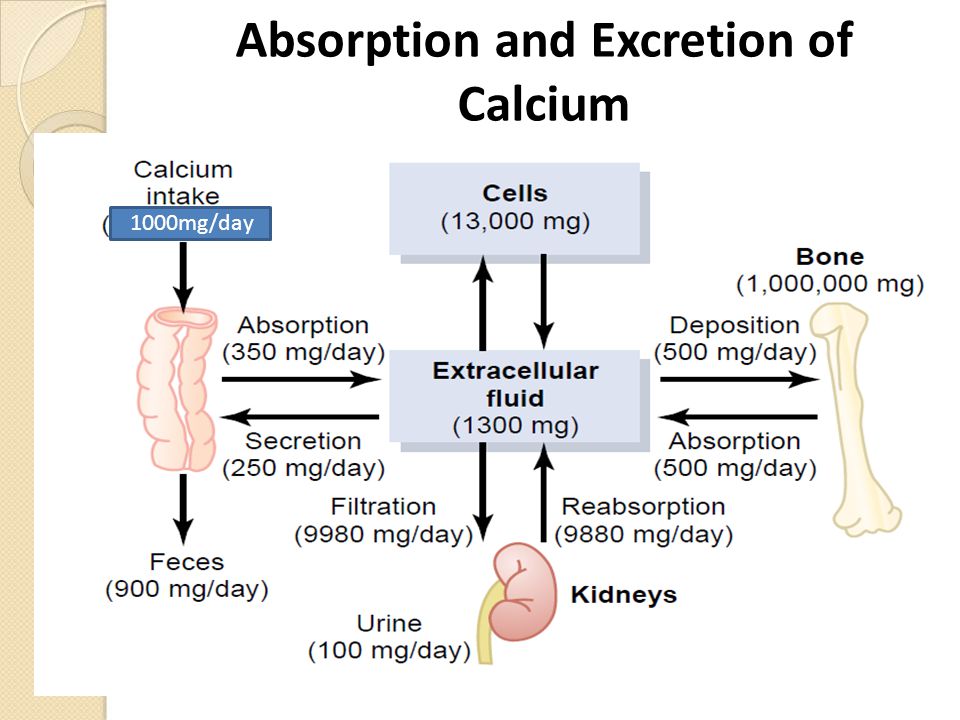 This is especially true in pediatric and geriatric practice. In addition, DI-CAFOS ® A60 can be used to create dosage forms with a high density, exceeding the density of gastric juice. This dosage form settles in the lower part of the antrum of the stomach and affects the passage of the food bolus through the stomach. However, it should be taken into account that the low specific surface area of DI-CAFOS ® A60 requires higher compression forces to obtain tablets of sufficient strength.
This is especially true in pediatric and geriatric practice. In addition, DI-CAFOS ® A60 can be used to create dosage forms with a high density, exceeding the density of gastric juice. This dosage form settles in the lower part of the antrum of the stomach and affects the passage of the food bolus through the stomach. However, it should be taken into account that the low specific surface area of DI-CAFOS ® A60 requires higher compression forces to obtain tablets of sufficient strength.
TRI-CAFOS ® 500 is rarely used as the sole filler in direct compression formulations. It has been successfully used as an addition to standard fillers. When used at 10 to 30% TRI-CAFOS ® 500 in tablet formulations, its high specific surface area promotes better binding of powder mixtures. Thus, the strength and porosity of the tablet simultaneously increase ( fig.8-9 ). In addition to calcium phosphates (DI-CAFOS ® A150 and TRI-CAFOS ® 500), the tablets contain 2% croscarmellose sodium as a disintegrant and 0. 5% lubricant (magnesium stearate). It should also be noted that in addition to increasing tablet strength, the addition of TRI-CAFOS ® 500 can increase tablet porosity and, as a result, significantly reduce the disintegration time ( fig. 10 ).
5% lubricant (magnesium stearate). It should also be noted that in addition to increasing tablet strength, the addition of TRI-CAFOS ® 500 can increase tablet porosity and, as a result, significantly reduce the disintegration time ( fig. 10 ).
Summary
The many properties of calcium phosphates, such as excellent flowability or high compressibility, make them ideal fillers for direct compression. Since the main mechanism of deformation during compression of calcium phosphates is brittle fracture, these substances are less sensitive to the features of the production equipment, tabletting speed or lubricants. Such advantages can be useful when scaling production. Although this article focuses on the functional properties of calcium phosphates in direct compression, it should be noted that grades containing large particles in their composition can also be successfully applied in wet and dry granulation processes. The advantage of using them is ease of handling. In addition to high bulk density, they contain few fine particles. Thus, dust generation during weighing and screening processes is minimal. Until recently, excipients were considered solely as inactive ingredients, used only as powders for filling and further processing, but it is now known that they can also affect the efficacy and stability of drugs.
In addition to high bulk density, they contain few fine particles. Thus, dust generation during weighing and screening processes is minimal. Until recently, excipients were considered solely as inactive ingredients, used only as powders for filling and further processing, but it is now known that they can also affect the efficacy and stability of drugs.
Authors of article : Daniel Zakowiecki, Marek Lachmann and Tobias Heß
References
- Rowe CR, Sheskey PJ, Quinn ME. Handbook of Pharmaceutical Excipients (6th ed.). Pharmaceutical Press, London 2009.
- Khan MA, Reddy IK. Calcium phosphate in pharmaceutical product development. Calcium phosphates in biological and industrial systems (ed. Zahid Amjad). Kluwer Academic Publishers, Boston 1998, pp. 303–323.
- Marczynski Z. Tabletting technology of a dry extract from Solidago virgaurea L. with the use of silicified microcrystalline cellulose (Prosolv) and other selected auxiliary substances.
 Polim Med. 2009; 39(4):51–60.
Polim Med. 2009; 39(4):51–60. - Zhang Y, Law Y, Chakrabarti S. Physical Properties and Compact Analysis of Commonly Used Direct Compression Binders. AAPS PharmSciTech. 2003; 4(4): 489–499.
- Kaushal AM, Vangala VR, Suryanarayanan R. Unusual effect of water vapor pressure on dehydration of dibasic calcium phosphate dihydrate. J Pharm Sc. 2011; 100(4): 1456-1466.
- Bolhuis GK, Chowhan ZT. Materials for direct compaction. Pharmaceutical Powder Compaction Technology (ed. Alderborn G, Nyström C). Marcel Dekker Inc., New York 1996, pp. 419–478.
- Zebrowska W, Sawicki W. Excipients. The applied pharmacy (ed. Janicki S, Fiebig A, Sznitowska M). PZWL, Warsaw 2008, pp. 652 – 693.
- De Boer AH, Bolhuis GK, Lerk CF. Bonding characteristics by scanning electron microscopy of powders mixed with magnesium stearate. Powder Technol. 1978; 20(1): 75-82.
- Bolhuis GK, Lerk CF, Zijlstra HT, De Boer AH. Film formation by magnesium stearate during mixing and its effect on tabletting.
 Pharm. weekbl. 1975; 110:317–325.
Pharm. weekbl. 1975; 110:317–325. - Patel NK, Patel BR, Plakogiannis FM, Reier GE. An evaluation of tricalcium phosphate excipients particularly using instrumented rotary and single station tablet presses. drugdev. Ind. Pharm. 1987; 13:2693-2718.
- Ahlneck C, Alderborn G. Moisture absorption and tableting II. The effect on tentile strength and air permeability of the relative humidity during storage of tablets of 3 crystalline materials. Int J Pharm 1989; 56:143-150.
- Zakowiecki D, Emrich A, Lachmann M, Tiwari R, Hess T. Application of highly porous calcium phosphates in quickly disintegrating formulations. Poster presented at the 2nd European Conference on Pharmaceutics, 2017 April 3-4; Cracow, Poland.
- Zakowiecki D, Emrich A, Lachmann M, Hess T. The use of highly porous calcium phosphates in the development of a quickly disintegrating formulation: ibuprofen 250 mg / caffeine 50 mg tablets. Poster presented at the AAPS Annual Meeting and Exposition, 2017 November 12-15; San Diego, CA, US.

Preparation of trisubstituted calcium phosphate and application
Trisubstituted calcium phosphate (tricalcium phosphate) is a compound of inorganic etymology, a calcium salt of orthophosphoric acid, existing along with mono- and dicalcium phosphates. It is a popular feed product, one of the most demanded Ca-P additives in animal husbandry in various countries of the world. If you say that this is the most consumed “feed phosphate”, everything will be 100% true.
Tricalcium phosphate is an integral part of a number of minerals: it can be seen in the structure of phosphorites, apatites and hydroxyapatites. To obtain, an apatite/phosphorite concentrate is taken and subjected together with hemihydrate phosphoric acid to hydro thermal firing. The optimal t for the synthesis process ranges from 1450-1600 °C. In the course of synthesis, calcium oxide or lime milk can interact with the mentioned acid during synthesis.
In addition, in the natural environment, this material is present in the milk of cows and is the basis of all bone tissue (occupies as much as 70% of the total volume). Of all the antioxidants, it is the most resistant to the action of extracellular fluid.
Properties
This reagent looks like a solid powdery amorphous mass. The color can vary from light gray and grayish brownish to light yellow and beige. Why such diversity? It arose due to the difference in chem. compositions of sources taken from different deposits of minerals-sources of tricalcium phosphate.
Dissolution in an aqueous medium, this substance is weak, but in acids dissolves well. The density is 2.81 g / cm³, melting t – 1670 ° C. Formula: Ca 3 (PO 4 ) 2 .
Application
As already mentioned, trisubstituted calcium phosphate is used mainly as an additive to feed for farm animals.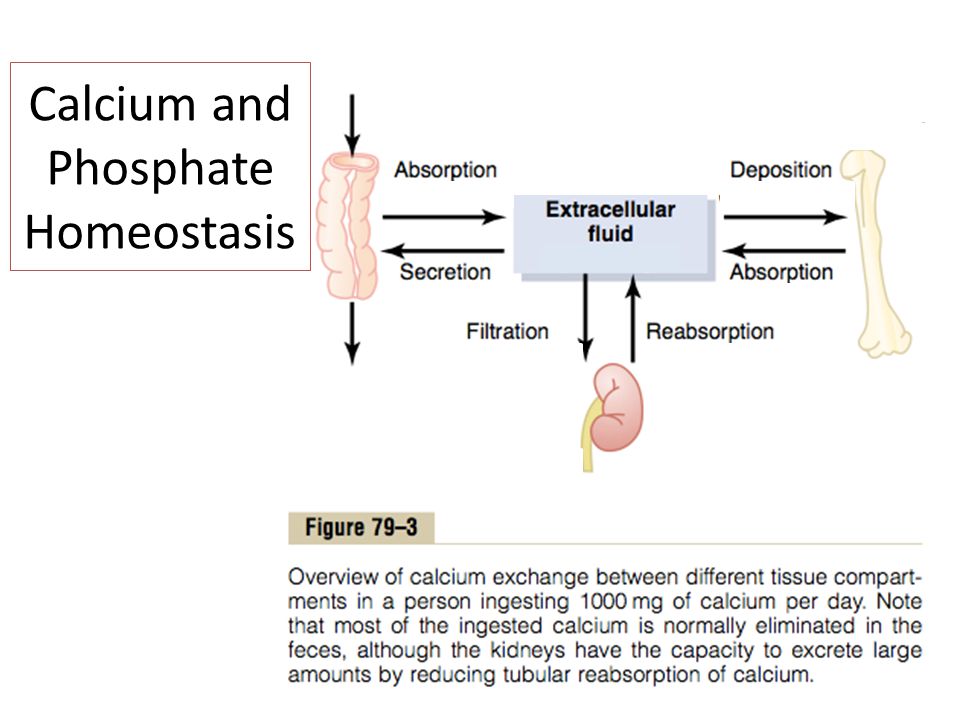 Here, its advantages are valuable, such as low cost in combination with the supply of mineral elements to the body in appropriate volumes. Thanks to the introduction of this additive in feed and feed mixtures, it becomes possible to properly balance the phosphorus level in the diet of all agricultural animals. Also in its functional abilities – increasing the productivity of livestock and poultry.
Here, its advantages are valuable, such as low cost in combination with the supply of mineral elements to the body in appropriate volumes. Thanks to the introduction of this additive in feed and feed mixtures, it becomes possible to properly balance the phosphorus level in the diet of all agricultural animals. Also in its functional abilities – increasing the productivity of livestock and poultry.
Another important application of this product is the food industry. Here it is known as a food additive E341 (iii) with an amount of the main substance of 98.5%, regulating the acid level of food, guarding the drying, caking and clumping of dry mixtures, separating the components, stabilizing the color and consistency, brightening and fixing the color . But this is not all the tasks that tricalcium phosphate helps to cope with in the food direction. It also serves as a water-retaining agent, emulsifier salt, antioxidant synergist, carrier and thickener when it comes to the processing of plant products (for example, vegetables and fruits). As a baking powder, it has a positive effect on the characteristics of flour, and, consequently, on flour products. In addition, to achieve certain goals, it is introduced into milk, breakfast cereals and concentrates, pasta, potato and fruit products, fish and meat products, drinks, sports nutrition and dietary supplements.
As a baking powder, it has a positive effect on the characteristics of flour, and, consequently, on flour products. In addition, to achieve certain goals, it is introduced into milk, breakfast cereals and concentrates, pasta, potato and fruit products, fish and meat products, drinks, sports nutrition and dietary supplements.
Tricalcium phosphate is also used to purify sugar syrups in the manufacture of refined sugar. And in the production of sodium chloride, or food salt , the hygroscopicity of this product is minimized (providing conditioning).
It should be taken into account that different amounts of E341(iii) are acceptable for different foods. So, 1-1.5 g of tricalcium phosphate per liter can be introduced into different types of milk, 2-5 g / l into cream and cheeses. 2 grams per 1 kg is the norm for oils, spreads and margarines. It is allowed to add no more than 1 g/kg to dairy desserts, including ice cream, 5 g/kg to other types of ice cream, in particular to fruit ice, and 3 g/kg to dry desserts. 5 g / kg – this figure is also relevant for powdered sugar and pre-fried, frozen potatoes. For fruits, including glazed ones, the norm is 7 grams per kilogram, for sugary confectionery and milk chocolate / barley drinks – 20 g, for bread, rolls and flour sweets – 100 mg, and for potato processed products – 800 mg.
5 g / kg – this figure is also relevant for powdered sugar and pre-fried, frozen potatoes. For fruits, including glazed ones, the norm is 7 grams per kilogram, for sugary confectionery and milk chocolate / barley drinks – 20 g, for bread, rolls and flour sweets – 100 mg, and for potato processed products – 800 mg.
Additive E341(iii) is approved for use in the food industry by Ukrainian legislation. However, its maximum doses allowed for consumption are strictly regulated. This figure should not be more than 70 mg per kg of weight within 24 hours.
This compound is used, among other things, in the ceramic and glass industries. With his participation, they create toothpastes and powders, as well as medical products. Tricalcium phosphate is a popular component of abrasive materials designed for polishing and grinding metal surfaces. It also removes fluorine from water.
Is there a danger?
Considering the properties and applications of Ca 3 (PO 4 ) 2 , the issue of safety cannot be ignored. Is this substance dangerous or not? If yes, what harm is possible? What precautions should be taken in production? What to consider about packaging, storage and transportation? Etc.
Is this substance dangerous or not? If yes, what harm is possible? What precautions should be taken in production? What to consider about packaging, storage and transportation? Etc.
So, the considered product is not poisonous, does not pose a risk of fire and explosion. Belongs to the third class of danger. Its MPC in the working space is 6 mg/m³. Inhalation of dust may irritate the mucous membranes of the respiratory system. Therefore, it is impossible to neglect the use of PPE for respiratory organs, first of all, respirator .
To make the working process as safe as possible, the premises must be equipped with supply and exhaust ventilation. And those areas that are in the zone of the most intense dust emission should also be supplemented with protective umbrellas with hoods.
The correct packaging for this compound is PE bags to keep it safe. As an option – bags made of special grades of paper. Packing in this case depends on the number of paper layers: up to 40 kg if there are four layers, and up to 50 kg if there are five.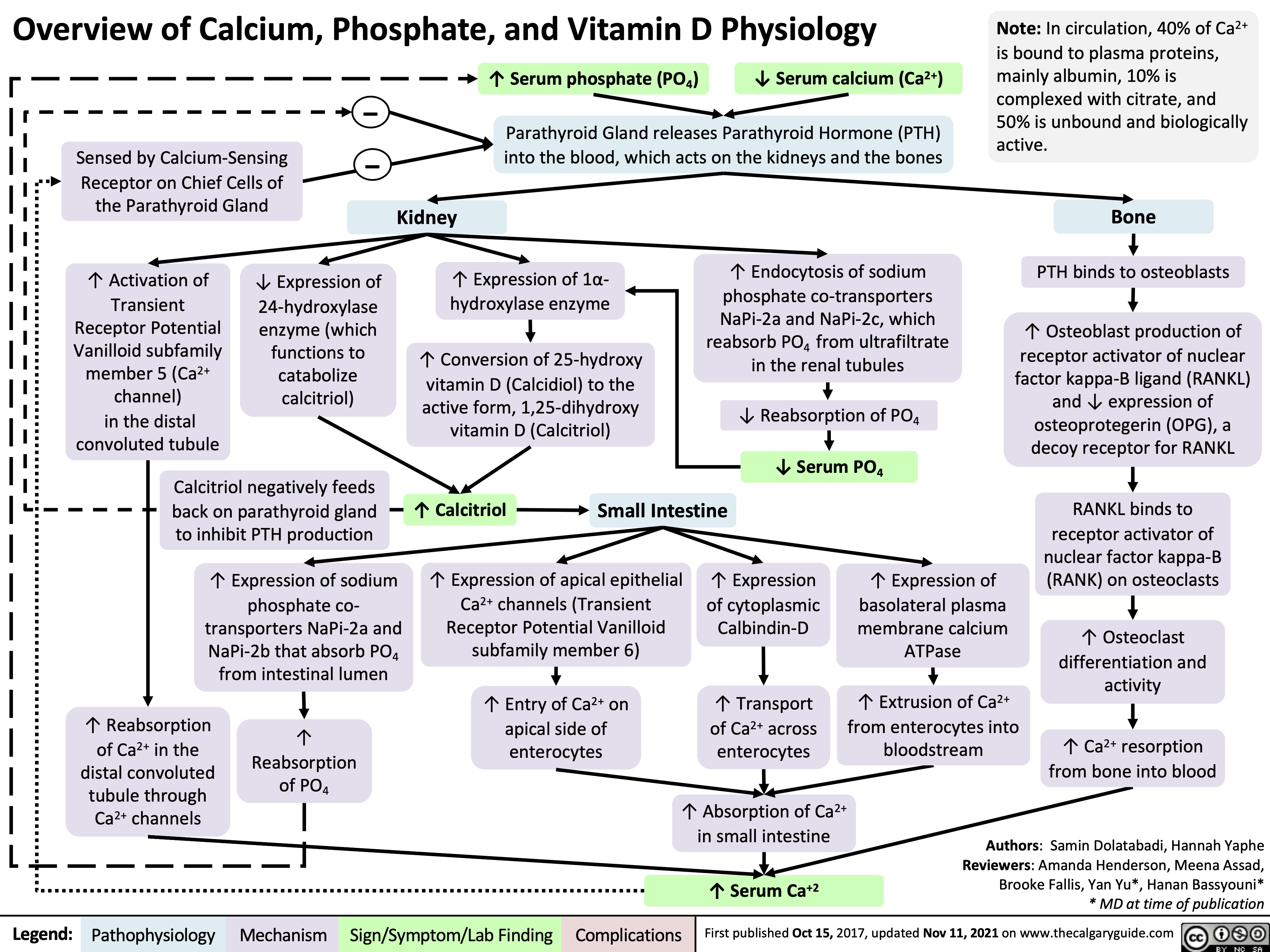



 Polim Med. 2009; 39(4):51–60.
Polim Med. 2009; 39(4):51–60. Pharm. weekbl. 1975; 110:317–325.
Pharm. weekbl. 1975; 110:317–325.